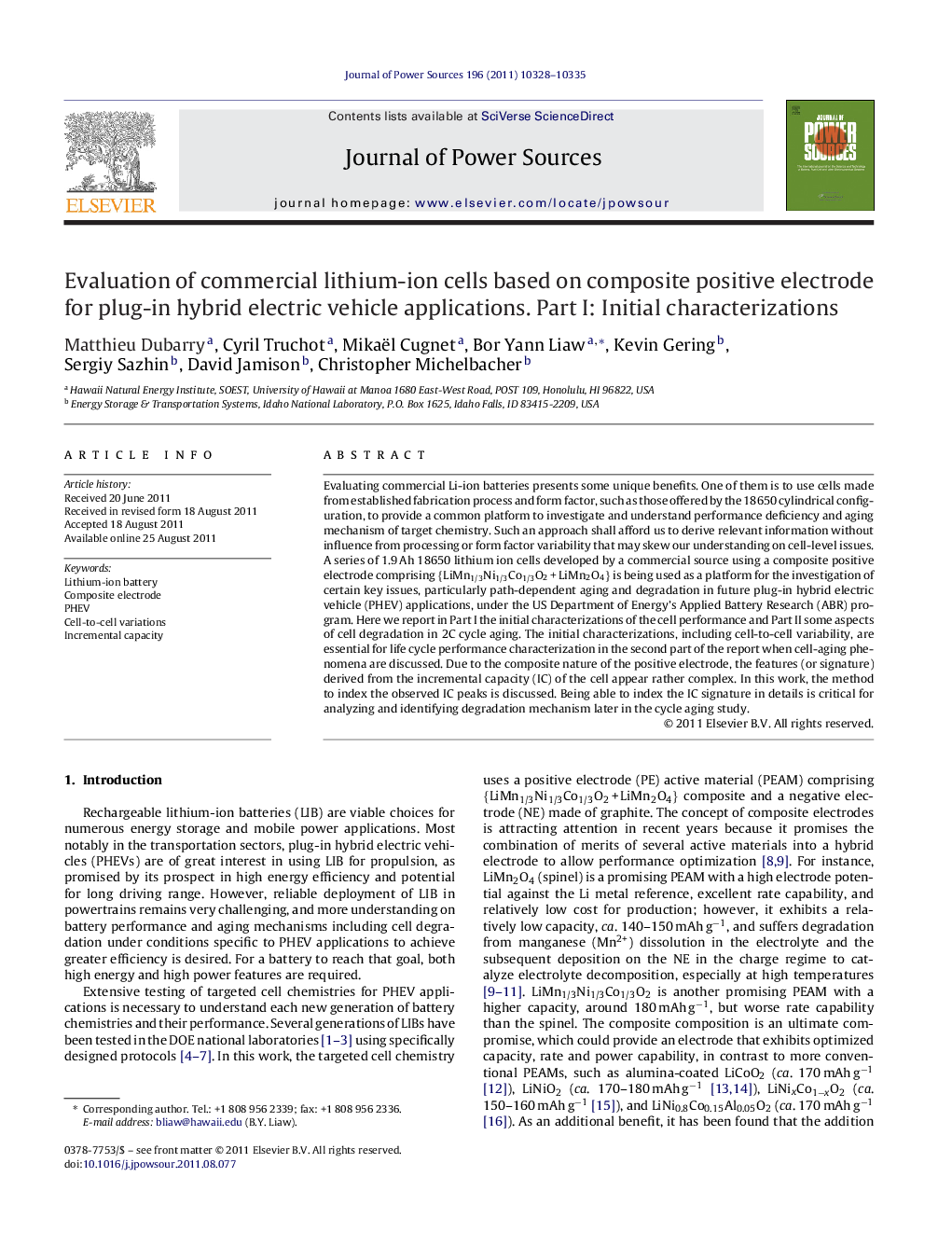| Article ID | Journal | Published Year | Pages | File Type |
|---|---|---|---|---|
| 1288706 | Journal of Power Sources | 2011 | 8 Pages |
Evaluating commercial Li-ion batteries presents some unique benefits. One of them is to use cells made from established fabrication process and form factor, such as those offered by the 18650 cylindrical configuration, to provide a common platform to investigate and understand performance deficiency and aging mechanism of target chemistry. Such an approach shall afford us to derive relevant information without influence from processing or form factor variability that may skew our understanding on cell-level issues. A series of 1.9 Ah 18650 lithium ion cells developed by a commercial source using a composite positive electrode comprising {LiMn1/3Ni1/3Co1/3O2 + LiMn2O4} is being used as a platform for the investigation of certain key issues, particularly path-dependent aging and degradation in future plug-in hybrid electric vehicle (PHEV) applications, under the US Department of Energy's Applied Battery Research (ABR) program. Here we report in Part I the initial characterizations of the cell performance and Part II some aspects of cell degradation in 2C cycle aging. The initial characterizations, including cell-to-cell variability, are essential for life cycle performance characterization in the second part of the report when cell-aging phenomena are discussed. Due to the composite nature of the positive electrode, the features (or signature) derived from the incremental capacity (IC) of the cell appear rather complex. In this work, the method to index the observed IC peaks is discussed. Being able to index the IC signature in details is critical for analyzing and identifying degradation mechanism later in the cycle aging study.
► Cell variations in performance and quantitative assessment of cell quality. ► The incremental capacity signature of the cell chemistry, which was indexed and explained. ► Cell degradation characterization using a 2C cycle aging regime. ► A unique analysis and logic development to identify the cell performance changes and the underlying mechanisms. ► A map of the cell degradation that exhibits the quantitative correlations of degree of capacity fades with fading mechanism and cycle number.
